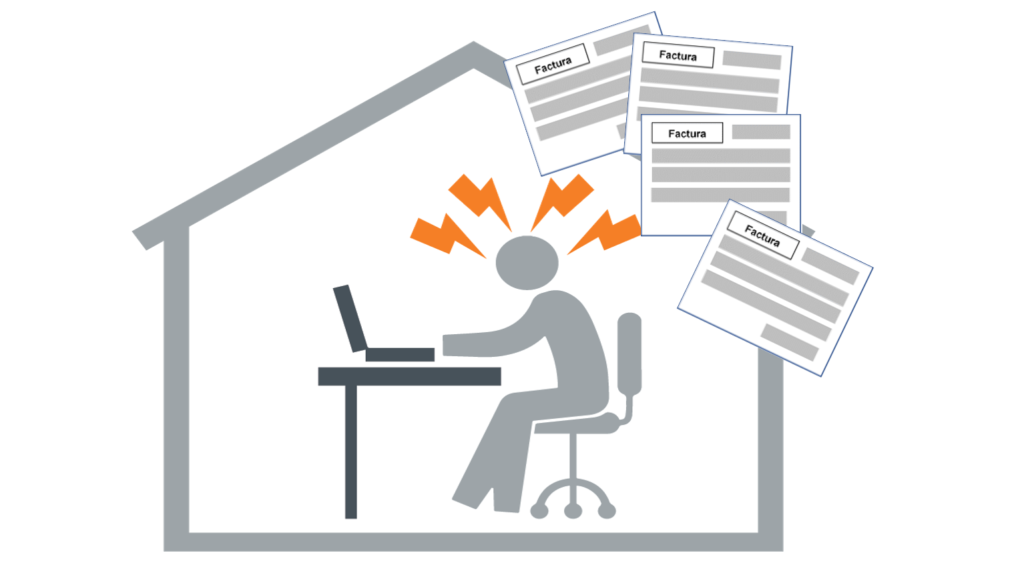When we talk about https://finanzasdomesticas.com/gastos-del-teletrabajo/ we’re referring to the costs that come up when working from home. These expenses can include things like office chairs, internet bills, and other tools you need to do your job. So, who pays for these costs? Is it the company, or is it the worker’s responsibility? Let’s dive into what the law says and how these costs should be handled.
In recent times, many people started working from home due to the pandemic. With this change, new rules came into play to make sure that “gastos del teletrabajo” are fairly managed. Companies and employees need to understand their rights and responsibilities regarding these costs. Let’s explore how these expenses are divided and what you need to know about them.
What Are https://finanzasdomesticas.com/gastos-del-teletrabajo/?
Understanding https://finanzasdomesticas.com/gastos-del-teletrabajo/
When we talk about https://finanzasdomesticas.com/gastos-del-teletrabajo/ we’re discussing all the costs that come with working from home. These expenses can include things like buying office furniture, paying for internet, and getting other work tools. It’s important to know what these costs are to understand how they should be handled.
Types of Costs in Telework
There are different kinds of costs in telework. Some are for things you need to work well, like a comfortable chair or a good computer. Others might be for everyday things like electricity and internet, which you use while working from home. Knowing these can help you plan better and understand who should pay for them.
Why It Matters
Understanding “gastos-del-teletrabajo” helps both workers and companies. Workers need to know what they might have to pay for, and companies need to know what they should cover. This way, both sides can agree on what is fair and avoid confusion.
Who Should Cover “Gastos del Teletrabajo”?
Determining the Cost Responsibility
The question of who covers “gastos-del-teletrabajo” is crucial. Generally, the company should help with these costs since they benefit from employees working from home. This includes things like office equipment and internet bills. Employees should not have to pay out of their own pockets for these essential tools.
Company’s Role
Companies are often required to cover some of the “gastos-del-teletrabajo.” This can include providing or reimbursing for necessary equipment, like computers and printers. It’s a fair practice to ensure employees have what they need without having to spend their own money.
Employee’s Contribution
In some cases, employees might have to handle part of the costs. For example, if a worker already has a home office setup, they might not need extra equipment. It’s important for both sides to discuss and agree on who pays for what to make sure everything is clear.
The Law and “Gastos del Teletrabajo”: What You Need to Know
Legal Framework for Costs
The law has specific rules about “gastos-del-teletrabajo.” For instance, in many places, companies are required to cover the costs associated with remote work. This ensures that employees do not bear the burden of expenses related to their job while working from home.
What the Law Covers
According to legal guidelines, the company should pay for necessary equipment and services. This includes things like internet bills, office furniture, and other tools that help employees do their job. The goal is to ensure that remote work does not cost employees extra money.
What Employees Should Know
Employees should be aware of their rights regarding “gastos-del-teletrabajo.” Understanding the law helps them know what costs the company should cover. It also helps in discussing and negotiating these expenses with their employer to make sure everything is fair.
Essential Items for Telework: “Gastos del Teletrabajo”
Necessary Equipment
For effective telework, several items are essential. These include a good-quality computer, a comfortable chair, and reliable internet. All these are part of the “gastos-del-teletrabajo” that companies should typically cover to ensure employees can work efficiently from home.
Office Furniture Needs
Having the right furniture is also important. This means a desk that fits well in your home office and a chair that supports good posture. These are necessary for comfort and productivity, and ideally, the company should provide or pay for these items.
Technology and Tools
In addition to furniture, technology is crucial for telework. This includes things like software and hardware that help with daily tasks. These costs are also part of “gastos-del-teletrabajo” and should be managed by the employer to avoid extra expenses for employees.

Understanding the Costs of Working from Home
Common Costs in Remote Work
When working from home, you might encounter various costs. This includes internet bills, electricity, and office supplies. These are common “gastos-del-teletrabajo” that can add up over time. It’s important to understand what these costs are and how they can be managed.
Managing Your Expenses
To handle these costs, it’s useful to keep track of your expenses. This means noting down what you spend on internet, utilities, and other work-related items. Keeping records can help in discussions with your employer about who should pay for these costs.
Employer’s Support
Employers often provide support to cover some of these expenses. This might include a fixed amount for “gastos-del-teletrabajo” or reimbursement for specific items. Clear communication with your employer can help ensure that these costs are covered fairly.
How to Manage “Gastos del Teletrabajo” Effectively
Tracking Your Costs
Effective management of “gastos-del-teletrabajo” starts with tracking your costs. Keep detailed records of what you spend on home office equipment, internet, and other essentials. This will help you understand your expenses and make it easier to discuss them with your employer.
Creating a Budget
Setting up a budget for “gastos-del-teletrabajo” can also be helpful. Decide how much you need to spend on different items and stick to it. This budget can guide you in making sure you don’t overspend and can help in discussions about compensation with your employer.
Negotiating with Your Employer
If you find that managing these expenses is challenging, talk to your employer. Discuss the costs you are facing and see if there is a possibility for compensation or reimbursement. Open communication can lead to a fair arrangement that covers your needs.
Differences Between Personal and Professional “Gastos del Teletrabajo”
Personal vs. Professional Expenses
It’s important to separate personal costs from professional ones when discussing “gastos-del-teletrabajo.” Personal expenses, like household utilities, should not be included in work-related cost discussions. Only costs directly related to your job should be considered.
What Companies Should Cover
Companies should cover the professional expenses that come with teleworking. This includes office equipment and internet costs necessary for performing your job. Differentiating between personal and professional expenses helps in managing these costs effectively.
Fair Compensation
To ensure fair compensation, discuss with your employer what costs are considered professional. Agree on which expenses the company will cover and what will remain your responsibility. This clarity helps avoid misunderstandings and ensures fair treatment.
Common “Gastos del Teletrabajo” You Might Not Expect
Unexpected Costs
Some “gastos-del-teletrabajo” might be surprising. For example, you might need to buy extra office supplies or upgrade your internet speed. These unexpected costs can add up, so it’s important to be aware of them.
Additional Expenses
In addition to the basics, there could be other costs like software subscriptions or maintenance for your home office setup. Knowing about these potential expenses can help you plan better and discuss them with your employer if needed.
Planning for Extras
Planning for these extra costs can help manage your budget more effectively. Keep track of any additional expenses that come up and be prepared to address them with your employer. This way, you can ensure that all necessary costs are covered.
Tips for Reducing “Gastos del Teletrabajo”
Cost-Saving Strategies
Reducing “gastos-del-teletrabajo” is possible with a few strategies. Look for ways to save on office supplies and utilities. For example, buying in bulk or using energy-efficient devices can help cut costs.
Using Existing Resources
Make use of what you already have. If you have a functional desk or chair at home, use those instead of buying new ones. This can reduce the amount you need to spend on setting up your home office.
Discussing Cost Management
Talk to your employer about potential ways to manage these expenses. Sometimes, companies can provide advice or support on how to reduce costs. Open discussions can lead to helpful solutions that benefit both you and your employer.
The Role of Companies in “Gastos del Teletrabajo”
Company’s Responsibilities
The role of companies in “gastos-del-teletrabajo” is crucial. Companies should cover the costs for necessary work equipment and tools. This ensures that employees have what they need to work effectively from home without bearing extra costs.
Providing Necessary Equipment
Companies often need to provide or reimburse for items like computers and office furniture. This support helps maintain productivity and comfort for employees. Ensuring that these costs are covered is a key part of managing remote work.
Supporting Employees
Besides covering costs, companies should offer support and guidance. This can include advice on setting up a home office or tips on managing expenses. A supportive approach helps employees feel valued and ensures that remote work runs smoothly.
How to Negotiate “Gastos del Teletrabajo” with Your Employer
Starting the Conversation
When discussing “gastos-del-teletrabajo” with your employer, start by gathering all relevant information. Prepare a list of expenses you are incurring and present it clearly. This will help in negotiating a fair solution.
Proposing Solutions
Offer possible solutions for covering these costs. You might suggest a fixed monthly allowance or reimbursement for specific items. Presenting options can make it easier for your employer to agree on a fair arrangement.
Documenting Agreements
Once you reach an agreement, make sure it’s documented. This could be in the form of a written contract or an email confirmation. Having a clear record ensures that both sides understand their responsibilities regarding “gastos-del-teletrabajo.”
Legal Requirements for “Gastos del Teletrabajo”
Understanding Legal Rules
Legal requirements for “gastos-del-teletrabajo” vary by region. In many places, companies are legally obligated to cover certain costs related to remote work. This helps protect employees from having to pay extra for work necessities.
Coverage by Law
Laws often specify what costs companies should cover, such as office equipment and internet expenses. Understanding these legal requirements helps ensure that you are not left paying for essential work tools on your own.
Employee Rights
Employees have the right to fair treatment regarding these expenses. If you believe your employer is not meeting their legal obligations, you can seek advice or raise the issue with relevant authorities. Knowing your rights helps ensure that costs are handled correctly.
Can Employees Claim “Gastos del Teletrabajo”?
Claiming Expenses
Yes, employees can often claim “gastos-del-teletrabajo.” This might include expenses for office supplies, internet, or other work-related costs. Check with your employer or local regulations to see what can be claimed and how to do it.
Documenting Claims
To claim these expenses, keep detailed records of what you spend. This includes receipts and invoices for any work-related purchases. Proper documentation is essential for making successful claims.
Reimbursement Procedures
Find out the procedures for claiming these expenses. Your company might have a specific process for submitting claims and getting reimbursed. Following the correct steps ensures that you receive the compensation you’re entitled to.
https://finanzasdomesticas.com/gastos-del-teletrabajo/ in Different Countries: A Comparison
Global Perspectives
https://finanzasdomesticas.com/gastos-del-teletrabajo/ are handled differently in various countries. Some countries have strict rules requiring companies to cover remote work expenses, while others might be less clear. Understanding these differences helps in knowing what to expect based on your location.
Country-Specific Rules
In some countries, the law clearly states what expenses companies must cover. For example, in certain regions, companies must provide or reimburse for office equipment and internet costs. Knowing these rules helps employees understand their rights.
Comparing Practices
Comparing practices across countries can provide insights into how different regions handle remote work costs. This can also highlight best practices and inform discussions with your employer about what is fair in your location.
What Should Be Included in “Gastos del Teletrabajo” Agreements?
Key Components
A “gastos-del-teletrabajo” agreement should include specific details about what expenses are covered. This includes office equipment, internet costs, and any other work-related expenses. Clear agreements help prevent misunderstandings.
Agreement Details
Ensure that the agreement outlines how expenses will be reimbursed or covered. This can include a fixed monthly amount or reimbursement for specific items. Detailed agreements help both employees and employers understand their responsibilities.
Updating Agreements
As remote work needs change, agreements may need to be updated. Regularly review and revise the agreement to ensure it remains relevant and fair. This ensures that all costs are covered appropriately as work conditions evolve.
The Future of “Gastos del Teletrabajo”: Trends and Predictions
Emerging Trends
The future of https://finanzasdomesticas.com/gastos-del-teletrabajo/ is likely to see changes as remote work continues to evolve. Trends might include more companies covering these costs or new technologies affecting expenses. Staying informed about these trends helps in managing future costs.
Predicting Changes
Predictions about the future of remote work costs suggest that companies may become more supportive. This could include providing more resources or better reimbursement policies. Understanding these predictions helps in preparing for future changes.
Adapting to Changes
As trends and predictions shape the future, be prepared to adapt. This might involve renegotiating agreements or adjusting your budget. Being flexible ensures you can manage costs effectively as remote work continues to develop.
How to Document Your “Gastos del Teletrabajo”
Keeping Records
Documenting “gastos-del-teletrabajo” involves keeping detailed records of all related expenses. This includes saving receipts and tracking costs in a spreadsheet. Proper documentation helps in managing your budget and claiming expenses.
Organizing Your Records
Organize your records to make it easier to review and submit claims. Categorize expenses into different types, such as office supplies or internet costs. Clear organization helps in quickly finding and using the information when needed.
Using Tools for Documentation
Consider using tools or apps to help with documentation. These tools can help track expenses, store receipts digitally, and manage your budget. Using technology can make the process more efficient and less time-consuming.
https://finanzasdomesticas.com/gastos-del-teletrabajo/ for Freelancers vs. Full-Time Employees
Different Needs
https://finanzasdomesticas.com/gastos-del-teletrabajo/ can vary between freelancers and full-time employees. Freelancers might have different equipment needs and costs, while full-time employees might have more standard expenses covered by their employer. Understanding these differences helps in managing costs effectively.
Freelancer Expenses
Freelancers often bear more of their own costs. This can include buying equipment and paying for work-related utilities. They should track these expenses carefully and discuss them with clients or employers to see what can be covered.
Employee Expenses
Full-time employees might have some of their “gastos-del-teletrabajo” covered by their employer. However, they should still keep track of any additional costs they incur. Knowing what is covered and what is not helps in managing finances effectively.

The Impact of https://finanzasdomesticas.com/gastos-del-teletrabajo/ on Employee Satisfaction
Employee Well-Being
“Gastos-del-teletrabajo” can impact employee satisfaction. If employees have to cover a lot of costs themselves, it can affect their job satisfaction and productivity. Companies that support these expenses often see happier and more motivated employees.
Financial Stress
Covering “gastos-del-teletrabajo” on your own can cause financial stress. This stress can affect your work performance and overall well-being. Companies that help with these costs can reduce this stress and improve employee satisfaction.
Improving Satisfaction
To improve satisfaction, companies should address the costs associated with remote work. Offering support and fair compensation for “gastos-del-teletrabajo” helps in creating a positive work environment. This can lead to better performance and higher employee morale.
Examples of https://finanzasdomesticas.com/gastos-del-teletrabajo/ and How to Handle Them
Typical Examples
Examples of “gastos-del-teletrabajo” include internet bills, office furniture, and computer equipment. These are common expenses that remote workers might face. Knowing these examples helps in understanding what costs need to be managed.
Handling Office Equipment
For office equipment, such as computers and printers, discuss with your employer whether these costs will be covered. If not, consider budget-friendly options or used items to reduce expenses. Proper handling of these costs helps in maintaining a functional home office.
Managing Utility Costs
Utility costs, like electricity and internet, are part of working from home. Track these expenses and discuss with your employer about possible reimbursement. Managing these costs effectively ensures that your home office remains efficient and cost-effective.
Conclusion
In conclusion, understanding https://finanzasdomesticas.com/gastos-del-teletrabajo/ is important for both workers and companies. These are the costs that come with working from home, like internet bills and office supplies. Knowing what these costs are helps everyone know who should pay for what. This way, there are no surprises, and both sides can agree on what is fair.
Handling these costs properly makes working from home easier and more comfortable. Companies that help with “gastos-del-teletrabajo” show they care about their employees. This support leads to happier workers who can focus better on their jobs. By discussing and managing these expenses, everyone can enjoy a smoother remote work experience.
